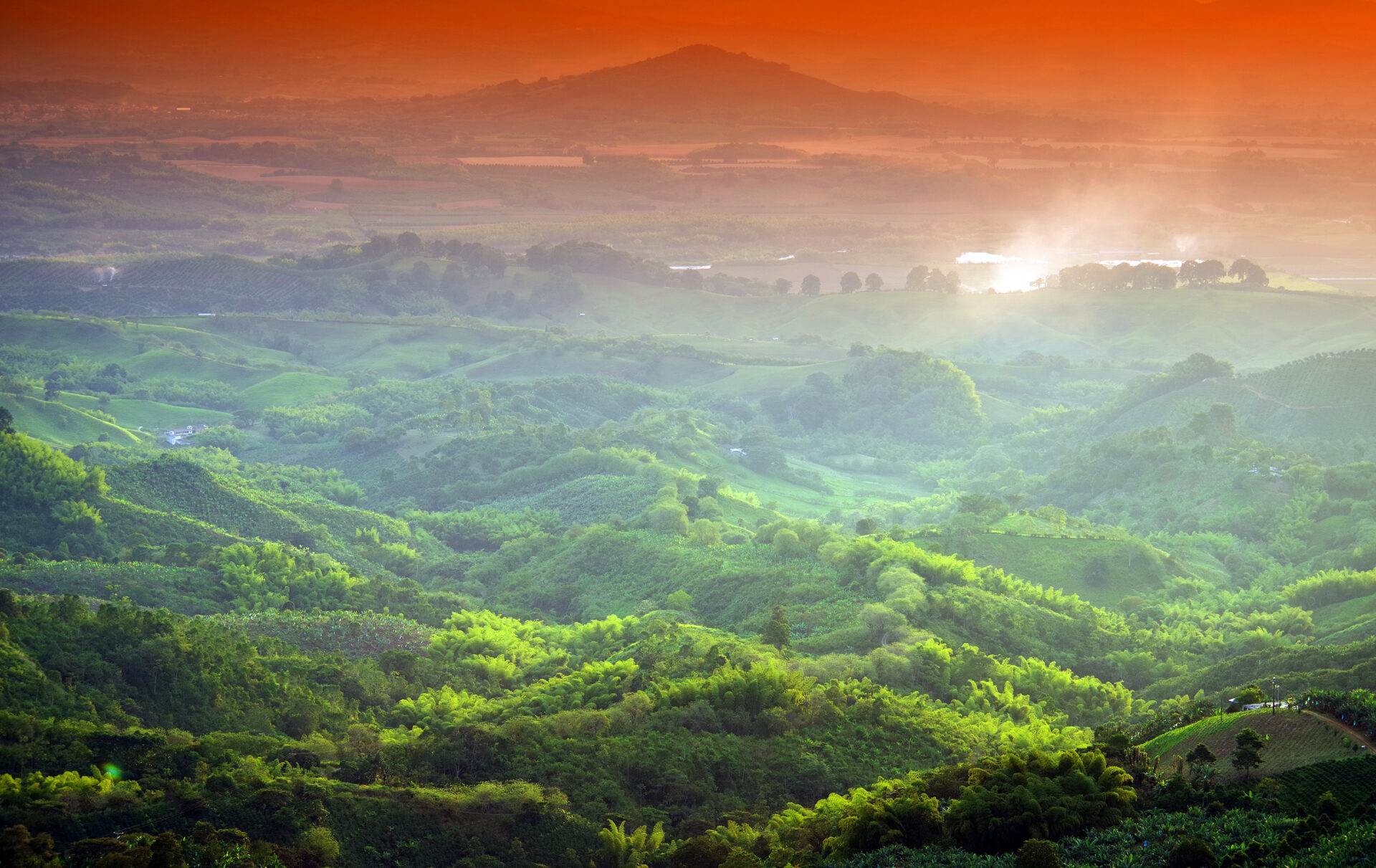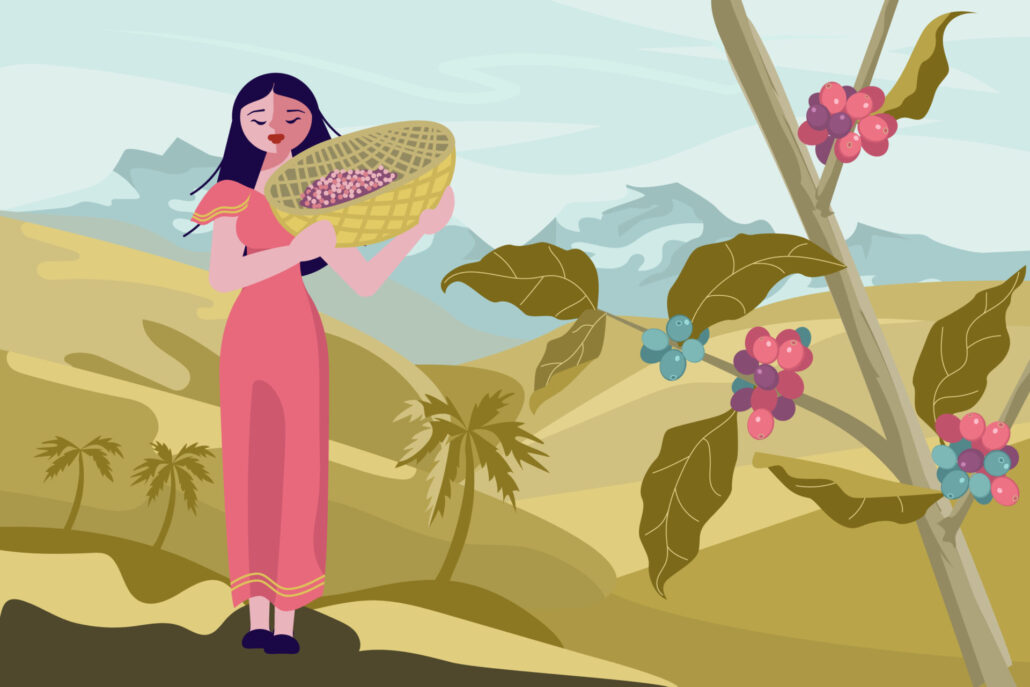Colombia, a land of diversity
Colombia is famous for its diversity and quality in the coffee sector, which plays a vital role in the country’s economy
Colombia is one of the main countries in the coffee sector, and we have already introduced you to Organico Nevada’s high-quality and high-altitude Colombian coffee and the Colombian context in terms of climate challenges and Cup of Excellence projects.
Colombia Land of Diversity 2021
The 6th National Quality Contest Colombia Land of Diversity recently occurred on 14th April 2021. More than one thousand coffee growers from 15 regions in Colombia showcased their best coffee lots during the harvest of November – February 2021 (Federacion Nacional de Cafeteros de Colombia, 2021a).
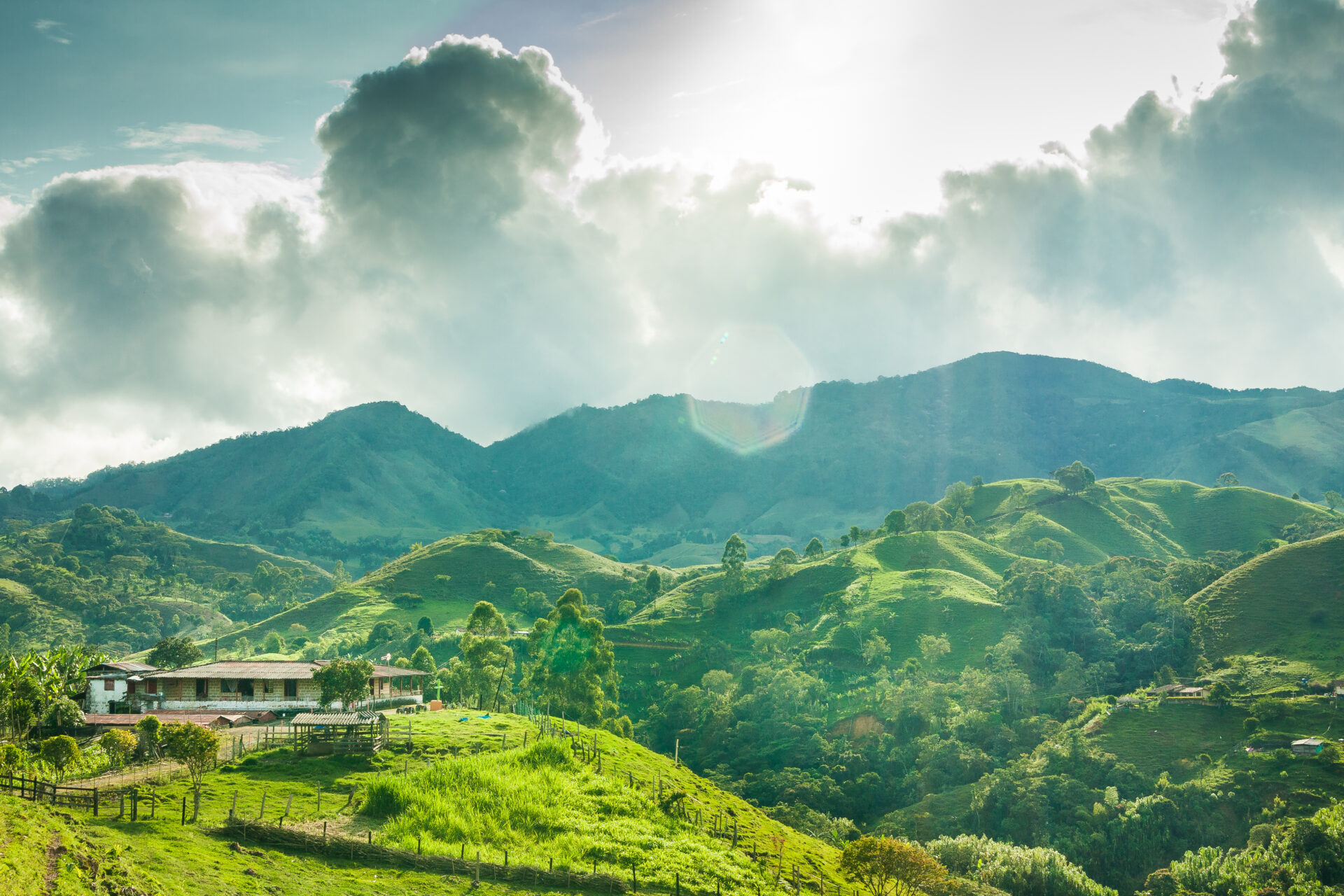
The auction concerned 26 lots, which were considered the best following different cupping rounds in Colombia and with the support of international judges (Federacion Nacional de Cafeteros de Colombia, 2021a).
The competition, which is open to everybody, is organized and run by the Colombian Coffee Growers Federation (FNC) and aims at rewarding the Colombian coffee farmers’ commitment to quality. The purpose of this competition is to celebrate quality and diversity in Colombian coffees by honouring coffee farmers and their plantations (Federacion Nacional de Cafeteros de Colombia, 2021b).
This year 1,100 coffee lots were showcased in the different municipalities of Colombia. Every coffee grower from every region in Colombia can take part in this unique competition. The coffee growers delivered the full lot at the Cooperatives’ closest point of purchase, and got paid for their coffee with a premium price underlining the quality and the effort of the producers. Afterwards, the coffee was transported to the warehouses of Almacafé, the logistics operator for the FNC (Federacion Nacional de Cafeteros de Colombia, 2021b).
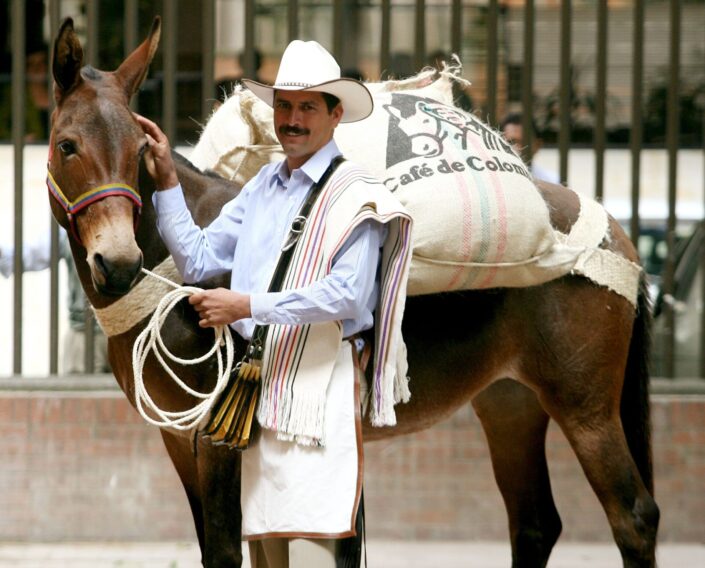
Source: ArtOn Café
A group of Almacafé cuppers selected the lots with an 86+ score on the SCA cupping protocol. 210 coffees out of 1,100 passed to the second cupping round, which was held in Bogotá. After a difficult selection aimed at picking the best lots from the 210 cupped coffees, the third round was held in Sasaima, Cundinamarca, where the final lots were cupped to select the crème de la crème. The top 26 lots were then selected and scored by international judges (Federacion Nacional de Cafeteros de Colombia, 2021b).
The Colombia Land of Diversity contest evaluates five attributes with a specific cupping protocol, so that coffee growers are able to understand the different characteristics of their coffee. The five attributes that are evaluated are listed below (Federacion Nacional de Cafeteros de Colombia, 2021b):
- Acidity
- Balance
- Body
- Mildness
- Softness
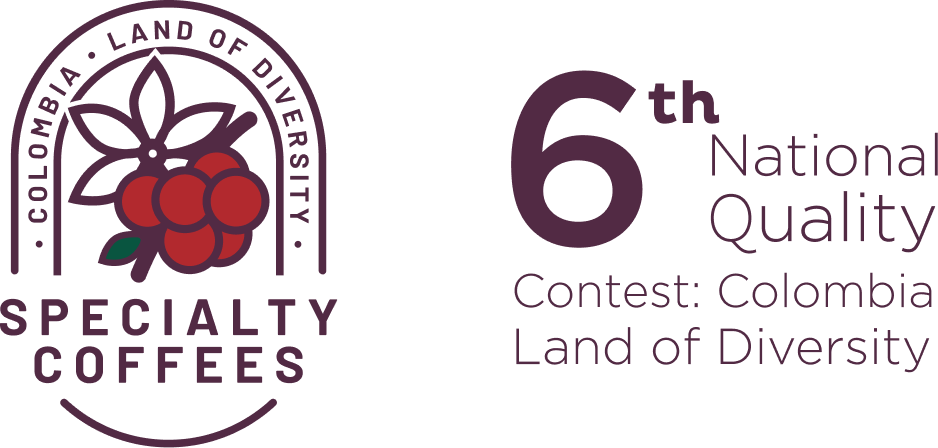
Source: Colombia Land of Diversity
The effects of climate change on Colombian small farms and refined varieties
As we have already pointed out in our article about CoE and the situation in Colombia, a study conducted by some researchers at the University of Illinois estimates the production function of Colombian coffee at the municipal level and forecasts productivity in Colombia at the same level for 2041-2060 (Ceballos-Sierra & Dall’Erba, 2021).
Rising temperatures are already affecting the principal plantations and this phenomenon is likely to intensify in the future. The authors of the University of Illinois study have analyzed the climate trends between 2007 and 2013, focusing both on temperatures and rainfalls in each of the 521 municipalities where coffee is grown. The researchers succeeded in estimating what might happen between 2041 and 2060. General productivity is supposed to enjoy a 7% rise, but significant differences may be noted depending on the region, since in mountain areas production could have a 16% increase, while in valley areas it might face an 8% decrease (Codignola, 2021).
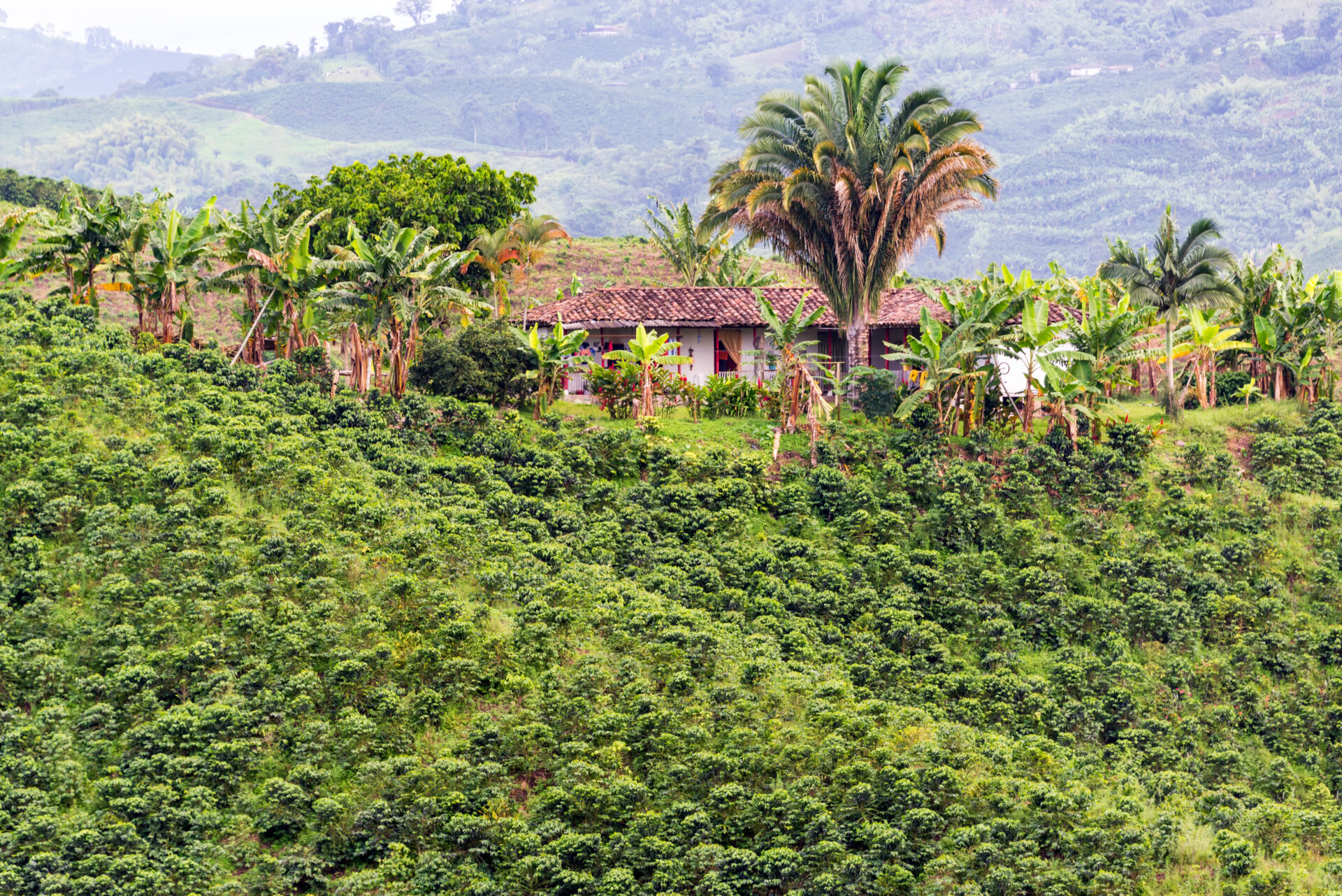
If these predictions are accurate, small farmers will be the ones most affected by this change. In the first place, not all small coffee growers will be able to adapt to these changes and protect their plantations from heat and drought, or buy new land to move their production site to a more favorable area. That is why government grants might be needed to buy new machinery or reforest some areas so that coffee plants can be in the shade. Moreover, some improvements to the infrastructures, such as roads, telecommunication, electric and hydraulic systems would be much appreciated by local farmers (Codignola, 2021).
The importance of coffee in the Colombian economy
The future of Colombia’s society and economy is based on the coffee bean, which can be considered as the symbol of this country at the international level. Of course, global standards are becoming more demanding, which is why Colombia is making an effort to guarantee a higher quality coffee. Moreover, coffee has become one of the tools to reintroduce former Farc guerrilla fighters into Colombian social life. After the peace agreement was signed, in fact, numerous small cooperatives of former guerrilla fighters were started in several areas of the country with the purpose of growing and selling coffee in the Colombian market (Caponera, 2020).
Quindio, Caldas and Risaralda – the so-called “Eje cafetero” – are the heart of the coffee production in Colombia, inserting it into the top 3 countries in the coffee sector (the other two being Brazil and Vietnam). This area has an important role in terms of tourism, as the coffee fragrance as the coffee fragrance can render the tourists pleasantly drowsy between the Cordillera de los Andes and the green valleys cut through by rivers and creeks (Caponera, 2020).

The 88th convention of the Federacion Nacional de Cafeteros has recently stated that in 2020, despite the pandemic, coffee production was 20% more than in 2019. Furthermore, there was a 26% rise in the coffee consumption at home, encouraged by the easy access to espresso coffee makers, often produced by sector-leading Italian companies. What is more, the Federation has announced various projects aimed at promoting tax relief for small and medium coffee farmers (Caponera, 2020).

El Parque del Café
The importance of coffee for the Colombian economy is emphasized by the Coffee National Park, with its 125 hectares dedicated to crops, plants and attractions. The park is located in Montenegro, Quindio, 300 km distant from the capital, Bogotá. This institution was founded in 1995 and over the years has become a point of reference for those who want to find out more about this noble and tasty drink. At the moment access to the museum is limited because of the Covid-19 prevention rules, but tourists are generally impressed by the way the whole production process is presented – from the plant through to the roasted and ground coffee bean. (Caponera, 2020).
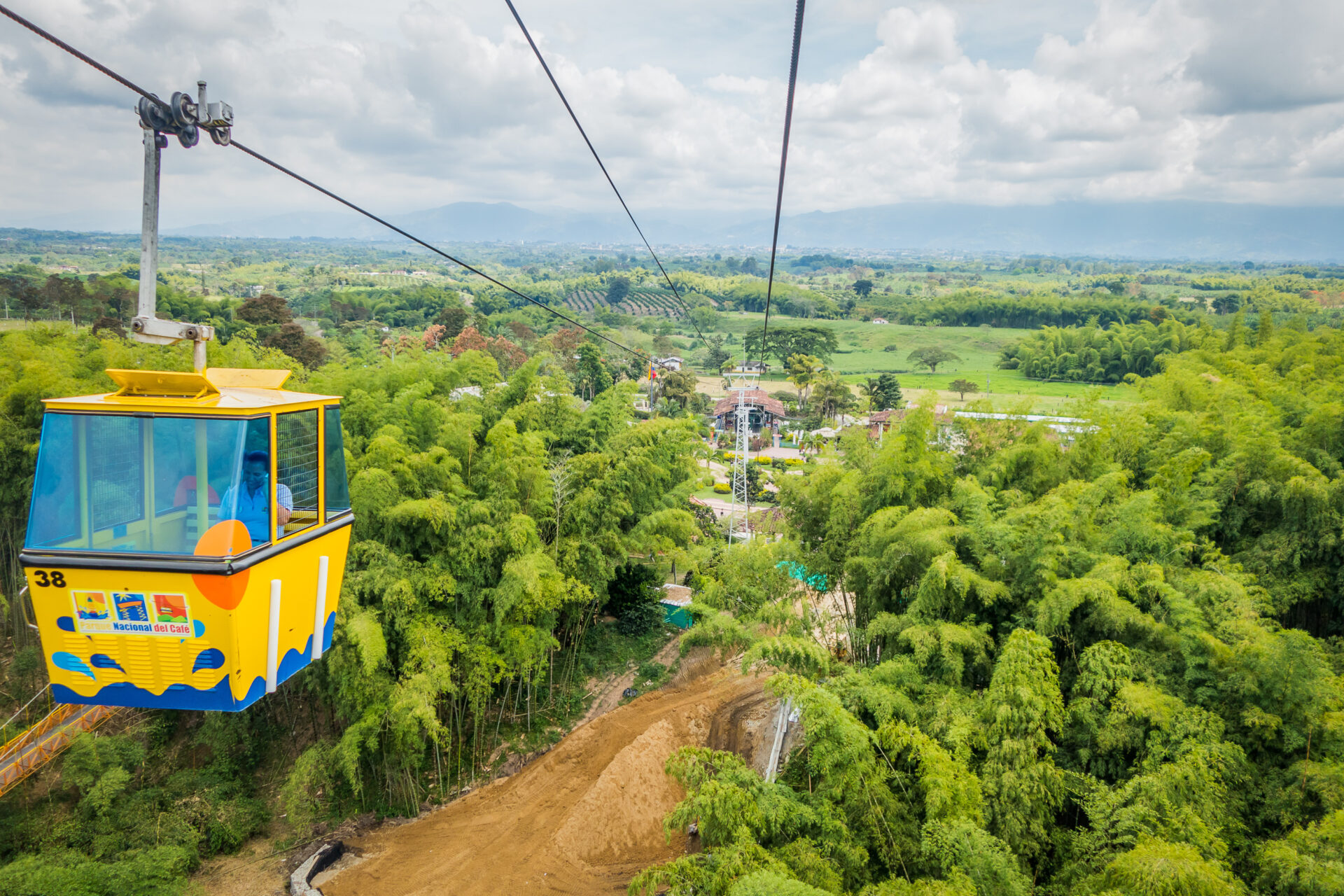
The Coffee National Park is one of the most important theme parks in Latin America, since it offers visitors a perfect combination of entertainment, landscape, adrenaline, art, culture, tradition and adventure (Parque del Café, n.d.) which makes it possible to live a once-in-a-lifetime experience. In the Coffee National Park visitors can go on a guided tour to learn many details about the world of coffee, such as the plantation, the harvesting process, the roasting and grinding phases. At the end of their tour visitors can taste coffee and really enjoy the coffee experience (Caponera, 2020).
Coffee in the construction sector
Colombia, being a coffee producer country, faces some difficulties in managing the wastage of this sector, which might also cause an increase in the pollution levels since decomposing coffee-bean skins release large amounts of methane. To find a solution to this economic and environmental problem, Woodpecker, a start-up located in Bogotá, has studied a way to transform this polluting wastage into building material (Annibaldi, 2021).
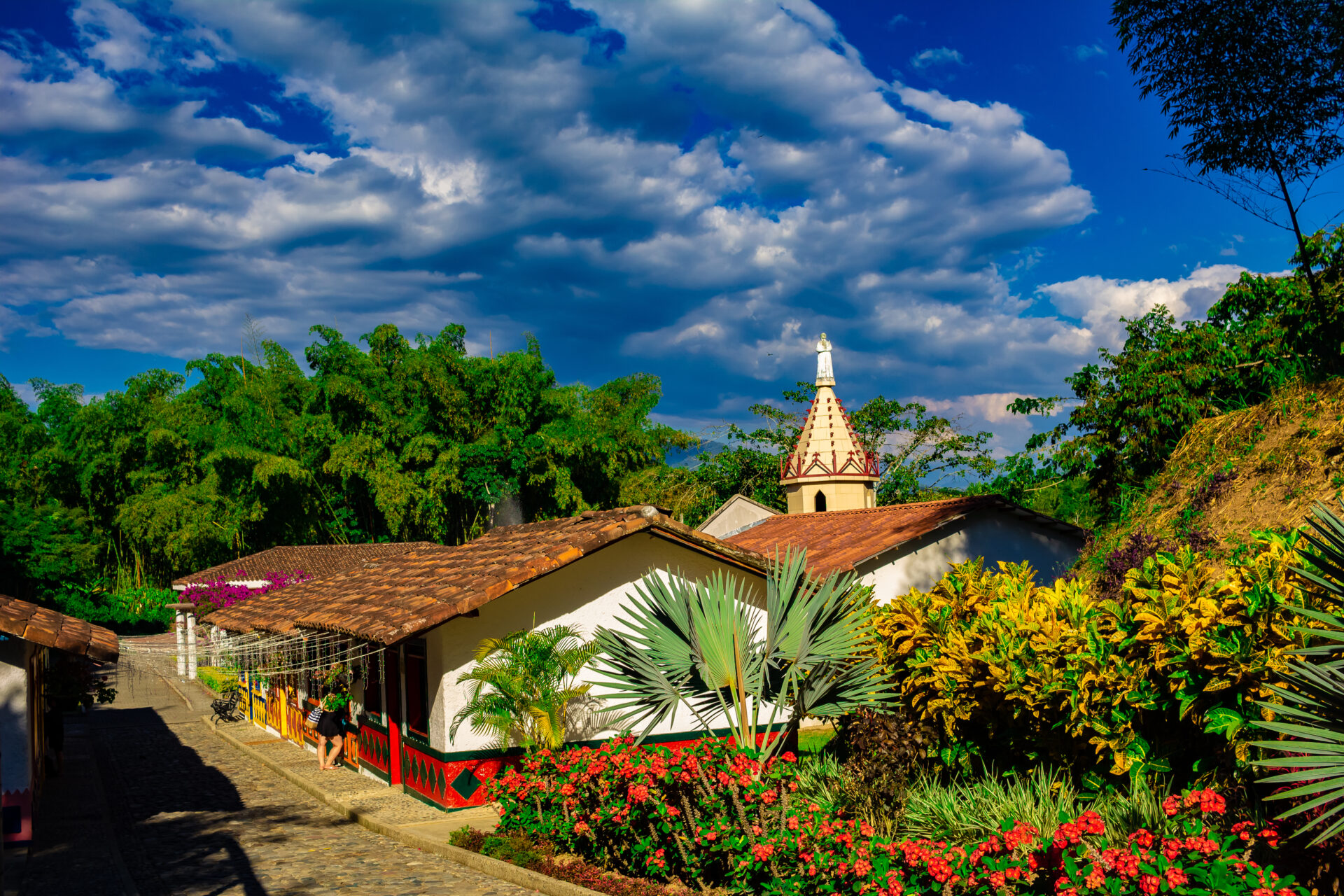
Woodpecker has created a new material, WPC (wood plastic composite), which offers a lot of benefits. WPC, in fact, is a durable and resistant material with characteristics that are useful to face diverse environmental conditions. In fact, WPC is uninflammable, has a low level of humidity absorption, is resistant to several temperature levels and to insects such as termites, and does not splinter. Moreover, WPC – which is pleasant to the sight – can be installed with basic tools and its maintenance is quite easy. And, last but not least, it is an eco-friendly product (Woodpecker WPC, n.d.) which might help Colombia’s economy and society.
This innovation, in fact, can be very useful in case of emergency, when it is necessary to rapidly create dwellings for evacuees, for example after a natural disaster. Moreover, this solution could also be applied to the housing and school buildings in rural and isolated areas, where sending building materials is usually complex and expensive (Annibaldi, 2021).
Bibliography
Annibaldi, M. (2021). In Colombia arrivano le case fatte di caffè. Ecologica. Retrieved from https://www.ecologica.online/2021/05/04/in-colombia-arrivano-le-case-fatte-di-caffe/
Caponera, A. (2020). Colombia, il caffe’ puo’ spingere la ripresa economica. Produzione su. Il recupero di ex guerriglieri. L’inchiesta. Retrieved from https://www.linchiestaquotidiano.it/news/2020/12/30/colombia-il-caffe-puo-spingere-la-ripresa-economica-prod/36319
Ceballos-Sierra, F., & Dall’Erba, S. (2021). The effect of climate variability on Colombian coffee productivity: A dynamic panel model approach. Agricultural Systems, 190, 103126. doi: 10.1016/j.agsy.2021.103126
Codignola, A. (2021). Caffè, il cambiamento climatico in Colombia ed Etiopia colpirà piccoli coltivatori e varietà pregiate. Il Fatto Alimentare. Retrieved from https://ilfattoalimentare.it/caffe-clima-colombia-etiopia.html
Federacion Nacional de Cafeteros de Colombia. (2021a). Colombia Land of Diversity. Retrieved May 14, 2021, from Home page website: https://www.colombialandofdiversity.com/es/
Federacion Nacional de Cafeteros de Colombia. (2021b). Colombia Land of Diversity. Retrieved May 14, 2021, from Process of the Contest website: https://www.colombialandofdiversity.com/es/competition
Parque del Café. (n.d.). Parque del Café. Retrieved May 15, 2021, from https://parquedelcafe.co/
Woodpecker WPC. (n.d.). Woodpecker WPC. Retrieved May 15, 2021, from https://woodpecker.com.co/
Picture credits (pictures retrieved May 21, 2021, from Shutterstock website):
- Opening picture: Tatiana Stulbo, Immagine vettorialestock royalty free con ID: 1613509741, Latin American female coffee farmer characters hold basket with mature coffee beans. Panoramic coffee plantation landscape. Branch with coffee beans and hills background. Flat Art Vector Illustration
- Colombia Land of Diversity: Martin Nabert, Foto stock royalty free con ID: 724171420, Retrieved 31 May, 2021, from: https://www.shutterstock.com/it/image-photo/this-image-shows-farmhouse-coffee-farmer-724171420
- The effects of climate change on Colombian small farms and refined varieties: Jess Kraft, Foto stock royalty free con ID: 714093559, Old farmhouse on hill surrounded by coffee plants near Manizales, Colombia
- The importance of coffee in the Colombian economy a: Alina Zamogilnykh, Foto stock royalty free con ID: 1850980237, MINCA, COLOMBIA – CIRCA MARCH 2020: view of mountains and green forest in Minca coffee village on the north of Colombia.
- The importance of coffee in the Colombian economy b: fernandoalonsostockfilms, Foto stock royalty free con ID: 1965090586, young woman picking up coffee beans in Colombia
- El parque del Café picture: Fotos593, Foto stock royalty free con ID: 309862331, QUINDIO, COLOMBIA – FEBRUARY 23, 2015: NATIONAL COFFEE PARK, COLOMBIA, Downward view of yellow cable car descending by, inside National Coffe Park, shot from passenger point view.
- Final picture: Mikadun, Foto stock royalty free con ID: 1160528278, Colline ricoperte di piantagioni di caffè e banane vicino a Buenavista, Antioquia, Colombia
Traduzione di Mattia Sambo
